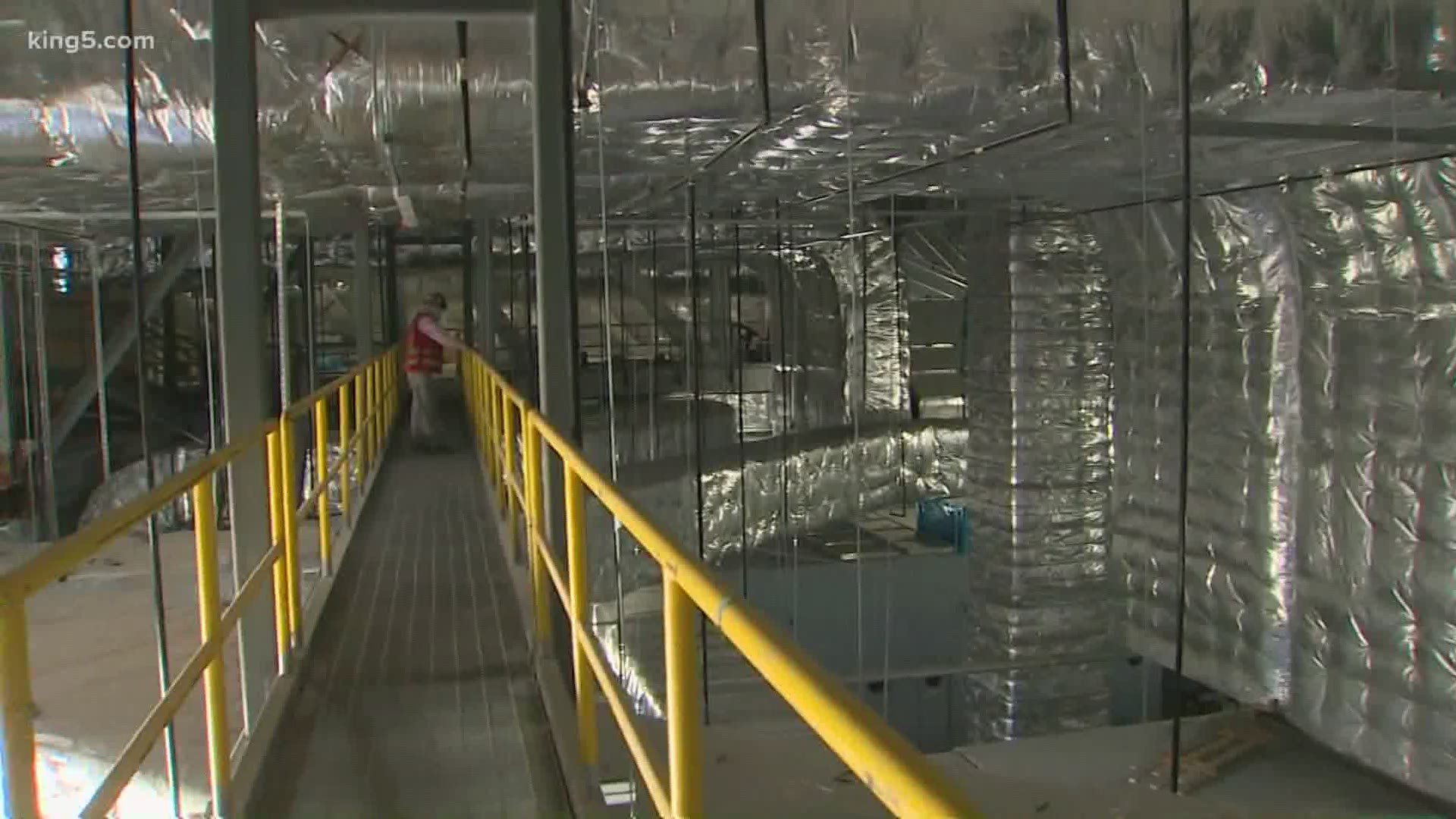SEATAC, Wash. — Some passengers may be nervous about flying in airplanes right now over the fear of contracting coronavirus, but what about walking through and sitting at airports to get on and off those planes?
Engineers at Sea-Tac International Airport, who manage and supervise the construction of massive heating and air-conditioning systems, are working to boost safety inside the airport terminal when it comes to air filtration.
Those same engineers are currently supervising a new, massive rebuilding of the HVAC system for the North Satellite Terminal at Sea-Tac. The core of the HVAC system was built in Cheney, Wash., and is the size of multiple semi-trucks parked side by side.
"When you build an airport terminal it's mostly major infrastructure between electrical and mechanical," said Ken Warren, the capital program leader for the project known internally as NorthStar.
Flying has suffered worldwide as COVID-19 has driven people off planes, largely over the fear of contracting the virus in what many passengers perceive as a closed tube of contained air in flight.
The reality is different, as airplane air is highly filtered, exchanged out every few minutes with air from outside the plane, and the ventilation system puts new air in from the top of the cabin, and pulls it out at the bottom.
The idea is that any emitted virus into the air would be pulled down to the floor, not blown across to the passenger a seat away. And so far, airlines have not proven to be COVID-19 hot spots.
On the ground, the system used even through older parts of Sea-Tac Airport was upgraded about 15 years ago to fight odors, not viruses. To keep jet fuel fumes from getting inside to passengers, fresh air is pulled from the tops of buildings as jet exhaust tends to hug the ground, according to Mike Tasker, senior manager for Facilities and Infrastructure.
More fresh air is actually pulled in than is pushed out, creating a mild balloon effect, that will push air from inside the building out, so it can’t pull exhaust in.
Multiple layers of filters also screen that air, and the air is turned over several times an hour, and in restrooms after every few minutes.
"One of the things we're dealing now with COVID, is dilutant air," explained Tasker. "We want to make the inside air, as much like the outside air as possible... Because it reduces the concentration of the potential virus."
Tasker said Sea-Tac Airport's level of air cleanliness not only exceeds local codes but nationally recognized industry standards. He can't speak for other airports around the country.
When it comes to the new North Satellite Terminal, Warren said there will be multiple layers of filtration and pressurization.
“Basically just like an OR suite in a hospital,” said Warren.
Whether you can even get coronavirus through the air is still debated within the medical community, but Sea-Tac Airport officials are promising at least good air for passengers inside the terminal and in the air.

